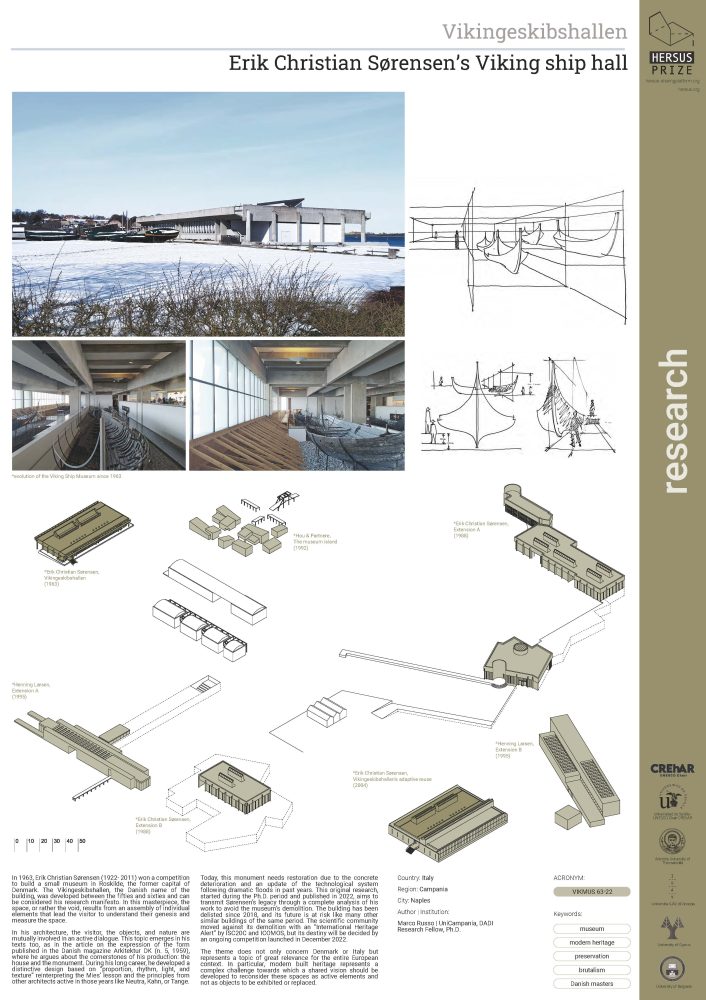Erik Christian Sørensen’s Viking ship hall
Research Honorary Award / Shortlisted

In 1963, Erik Christian Sørensen (1922- 2011) won a competition to build a small museum in Roskilde, the former capital of Denmark. The Vikingeskibshallen, the Danish name of the building, was developed between the fifties and sixties and can be considered his research manifesto. In this masterpiece, the space, or rather the void, results from an assembly of individual elements that lead the visitor to understand their genesis and measure the space.
In his architecture, the visitor, the objects, and nature are mutually involved in an active dialogue. This topic emerges in his texts too, as in the article on the expression of the form published in the Danish magazine Arkitektur DK (n. 5, 1959), where he argues about the cornerstones of his production: the
house and the monument. During his long career, he developed a distinctive design based on “proportion, rhythm, light, and texture” reinterpreting the Mies’ lesson and the principles from other architects active in those years like Neutra, Kahn, or Tange.
Today, this monument needs restoration due to the concrete deterioration and an update of the technological system following dramatic floods in past years. This original research, started during the Ph.D. period and published in 2022, aims to transmit Sørensen’s legacy through a complete analysis of his work to avoid the museum’s demolition. The building has been delisted since 2018, and its future is at risk like many other similar buildings of the same period. The scientific community moved against its demolition with an “International Heritage Alert” by ISC20C and ICOMOS, but its destiny will be decided by an ongoing competition launched in December 2022.
The theme does not only concern Denmark or Italy but represents a topic of great relevance for the entire European context. In particular, modern built heritage represents a complex challenge towards which a shared vision should be developed to reconsider these spaces as active elements and not as objects to be exhibited or replaced.
Author: Marco Russo